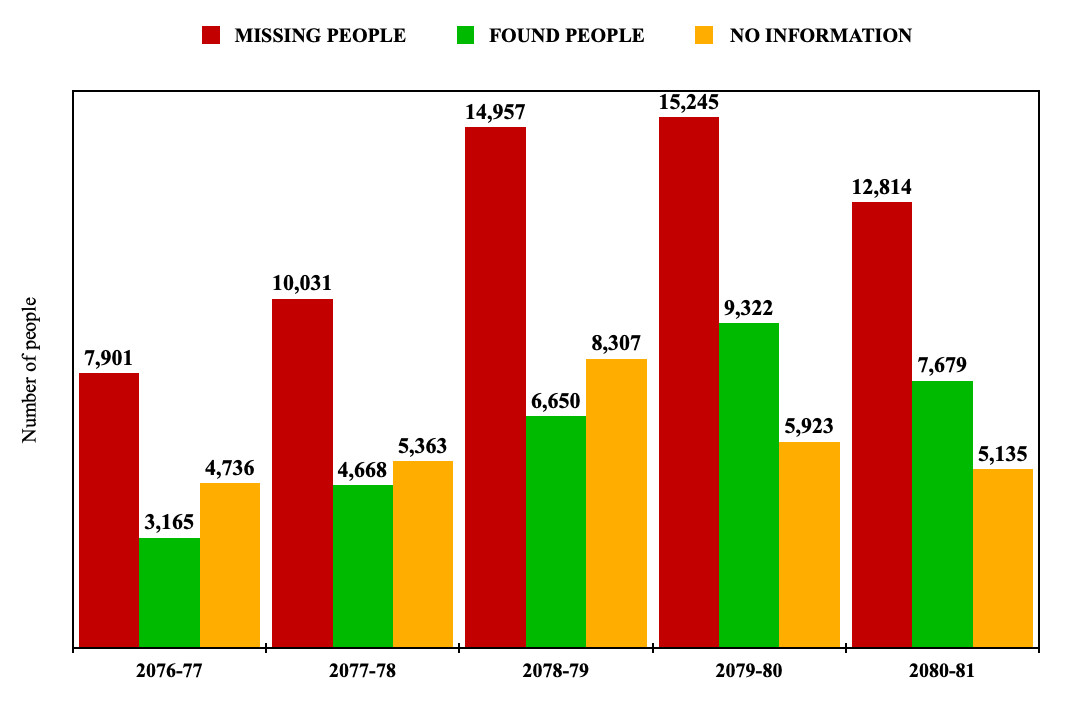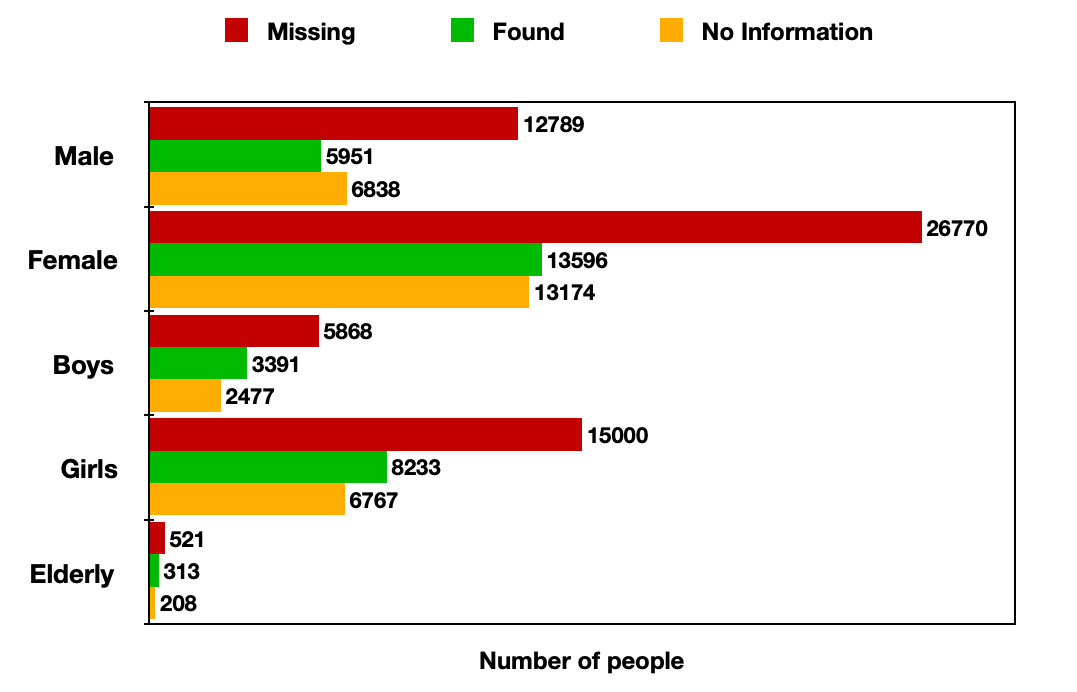
Sep 02 2025 | २०८२, भदौ १७ गते
Sep 02 2025 | २०८२, भदौ १७ गते

Lost and Found: The Unseen Gaps in Nepal's Missing Persons Crisis
When Reported Missing Doesn't Match the Found
Diya Mittal
Kathmandu, Nepal – The issue of missing persons in Nepal presents a complex challenge, with significant mismatch between the number of individuals reported missing and those found. Central Police Spokesperson DIGP Dan Bahadur Karki highlights a troubling phenomenon: the people recovered are not always the same as those initially reported missing, leading to a critical gap in the data and raising concerns about the efficacy of current tracking and reporting mechanisms.
Over the past five fiscal years, the Nepal Police have reported a significant number of missing persons, yet the number of found individuals does not always correlate directly with those missing. According to the latest records, a total of 60,948 people were reported missing during this period, while 31,484 were found. The annual breakdown is as follows:

This data highlights a persistent issue: the number of found individuals often includes people who were not initially reported as missing. This discrepancy complicates efforts to track and reunite missing persons with their families effectively.
Gender and Age Analysis: The data reveals significant gender and age disparities among the missing and found individuals, with women and children being disproportionately affected. For instance, in Year 2076/77, out of the 7,901 reported missing, 4,062 were women and 1,266 were girls. This trend continues across the years, underscoring the vulnerability of these groups:

Similarly, children, both boys and girls, account for a substantial number of missing cases. In Year 2078/79, for example, 1,135 boys and 3,249 girls were reported missing, reflecting the urgent need to address the safety and protection of younger populations.
A striking aspect of the data is the mismatch between the missing and found individuals. During the search for one missing person, the police may find others who were not reported missing, contributing to the mismatch in the data. This situation leads to families continuing their search for loved ones while other families unexpectedly reunite with their missing members.
To illustrate the mismatch and the real-world impact, here are two case studies:
Case Study 1: Khyati Shrestha In a high-profile case, Khyati Shrestha, a teenager, went missing in Kathmandu in 2009. Her disappearance sparked widespread media attention and a massive search effort. Unfortunately, her body was discovered several weeks later, having been brutally murdered. While the case brought to light the severe risks faced by young women, it also highlighted the police’s challenges in tracking and recovering missing persons. The investigation revealed systemic issues in reporting and coordination that delayed finding her.
Case Study 2: Rosy Maharjan Rosy Maharjan, a young girl from Lalitpur, was reported missing in 2017. Her case gained significant attention when it was discovered that she had been trafficked and taken to India. The Nepali police, working with international agencies, managed to rescue her after several months. Rosy's case underscores the vulnerability of young girls to trafficking and the complex international dimensions of missing persons cases.
Several factors contribute to why people go missing in Nepal, including:
The conditions in which missing individuals are found vary widely:
Several factors contribute to the mismatch between reported and found individuals:
To address these issues, a multi-faceted approach is necessary:
This initiative demonstrates the potential of technology in addressing the complexities of missing persons cases and highlights the importance of continued innovation and improvement in reporting mechanisms.
The issue of missing persons in Nepal is multifaceted and requires concerted efforts from law enforcement, communities, and the government. The mismatch in the data highlight the need for systemic improvements to ensure accurate tracking and recovery of missing individuals. By enhancing reporting mechanisms, raising public awareness, providing support to vulnerable populations, and leveraging technology, Nepal can work towards reducing the gap between reported missing and found individuals. Ensuring that every missing person is accounted for and reunited with their families remains a priority, demanding ongoing vigilance and collaboration across all levels of society.
The complexities of tracking and recovering missing persons require not only the diligence of law enforcement but also the cooperation and vigilance of the community. Only through a collective effort can we hope to close the gap between those who go missing and those who are found, ensuring that every missing person is accounted for and reunited with their loved ones.
© 2025 All right reserved to onlinepatrika.com | Site By : Sobij
© 2025 All right reserved to onlinepatrika.com | Site By : Sobij